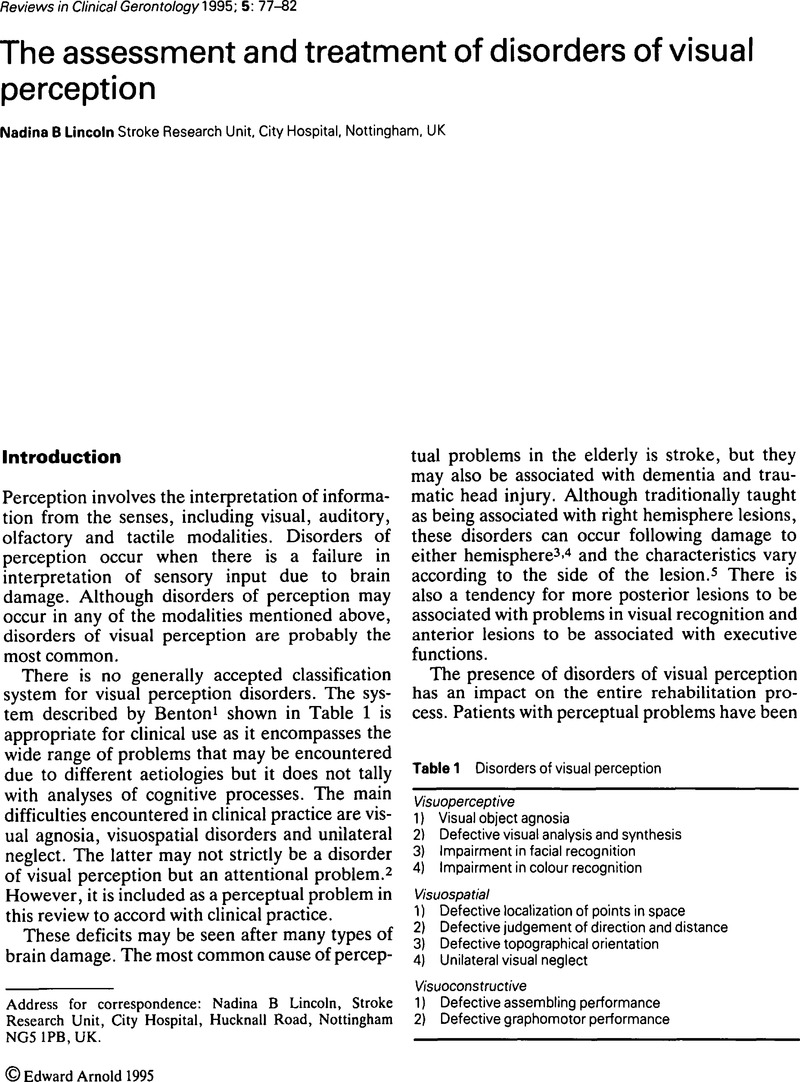Crossref Citations
This article has been cited by the following publications. This list is generated based on data provided by Crossref.
Walker, R.
1996.
Eye Patching and the Rehabilitation of Visual Neglect.
Neuropsychological Rehabilitation,
Vol. 6,
Issue. 3,
p.
219.
Lincoln, N. B.
Drummond, A. E. R.
Berman, P.
and
The Sue Study Group
1997.
Perceptual impairment and its impact on rehabilitation outcome.
Disability and Rehabilitation,
Vol. 19,
Issue. 6,
p.
231.
Bowen, Audrey
Lincoln, Nadina
and
Dewey, Michael
2002.
Cognitive rehabilitation for spatial neglect following stroke.
Cochrane Database of Systematic Reviews,
Johnson, Julene K.
Shaw, Gordon L.
Vuong, My
Vuong, Sydni
and
Cotman, Carl W.
2002.
Short-Term Improvement on a Visual-Spatial Task After Music Listening in Alzheimer's Disease.
Activities, Adaptation & Aging,
Vol. 26,
Issue. 3,
p.
37.
Cooke, Deirdre M.
McKenna, Kryss
and
Fleming, Jennifer
2005.
Development of a standardized occupational therapy screening tool for visual perception in adults.
Scandinavian Journal of Occupational Therapy,
Vol. 12,
Issue. 2,
p.
59.
Cooke, Deirdre M
McKenna, Kryss
Fleming, Jennifer
and
Darnell, Ross
2005.
The Reliability of the Occupational Therapy Adult Perceptual Screening Test (OT-APST).
British Journal of Occupational Therapy,
Vol. 68,
Issue. 11,
p.
509.
Bowen, Audrey
and
Lincoln, Nadina
2007.
Cognitive rehabilitation for spatial neglect following stroke.
Cochrane Database of Systematic Reviews,
Paci, Matteo
Matulli, Giovanni
Baccini, Marco
Rinaldi, Lucio A.
and
Baldassi, Stefano
2010.
Reported quality of randomized controlled trials in neglect rehabilitation.
Neurological Sciences,
Vol. 31,
Issue. 2,
p.
159.
de Vries, S. M.
Heutink, J.
Melis-Dankers, B. J. M.
Vrijling, A. C. L.
Cornelissen, F. W.
and
Tucha, O.
2018.
Screening of visual perceptual disorders following acquired brain injury: A Delphi study.
Applied Neuropsychology: Adult,
Vol. 25,
Issue. 3,
p.
197.





